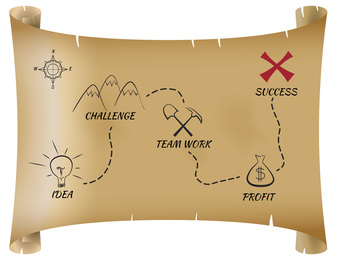
In my neck of the woods there are a lot of very talented engineers, and a lot of entrepreneurial spirit. My region (South Western part of Norway) is very much exposed to oil & gas industry and the delivery of products to plants, oil platforms etc. This means that it is very project focused and ETO (Engineer To Order) intensive.
In my neck of the woods there are a lot of very talented engineers, and a lot of entrepreneurial spirit. My region (South Western part of Norway) is very much exposed to oil & gas industry and the delivery of products to plants, oil platforms etc. This means that it is very project focused and ETO (Engineer To Order) intensive.
The entrepreneurial spirit I mentioned has led to a whole host of startups with good ideas of how to solve some problem with a new product in better and more cost effective ways.
One story I keep hearing from such product companies, not only in Norway, but also in other countries and project intensive industries goes something like this:
So we won our first contract and the customer is really impressed with our product and our technology. It became a bit more expensive to deliver the project than we thought, but we managed and we were sure we would have better returns on the next project.
As time progresses we expect our cost in the projects to drop significantly.
One story I keep hearing from such product companies, not only in Norway, but also in other countries and project intensive industries goes something like this:
So we won our first contract and the customer is really impressed with our product and our technology. It became a bit more expensive to deliver the project than we thought, but we managed and we were sure we would have better returns on the next project.
As time progresses we expect our cost in the projects to drop significantly.
| But what happens in a lot of such product companies? | There is nothing strange in expecting such a development. One would instinctively think that one would be able to shorten the project execution time as one gains experience and have successfully delivered such a product before. The organization knows what suppliers can deliver and which cannot. Engineers and employees in installation and commissioning are becoming more and more experienced etc. It becomes very, very hard to drive down the cost of delivering projects, even if the product delivered from project to project is very similar. The transition from entrepreneur to industrialized manufacturer becomes hard for a lot of these companies. |
Why is that?
Personally I think there are several factors
I’ve seen the three last bullets addressed with PLM platforms at various companies, however the technology itself is just one factor. The organizational processes and how they are enforced in the platform is of far bigger importance.
The first two bullets are a lot harder, as they require a shift in mindset from entrepreneur to industrialized manufacturer of the organization. This includes going from quick and nimble to more standardized processes, and continuous process improvement. If you consider PLM as a mindset rather than just a technology, you will also harvest benefits here, but it is hard work.
Bjorn Fidjeland
Personally I think there are several factors
- It was too hard to say no to those small insignificant changes that the client required in the next project….. That for engineering or manufacturing turned out to be not so insignificant.
- Product development is constantly being performed in the projects. Engineers will always search for the perfect and most elegant solution. That does not mean that it is the best or most cost effective way to manufacture the product.
- Clients or operators documentation requirements in terms of LCI (LifeCycle Information) deliveries. If the product company is unable to define a process to deal with shifting requirements from operator to operator, this becomes a manual nightmare that constantly diverts resources. Such a process should be an integrated part of the project execution process, and not as it mostly is today, a separated process.
- It is in my view paramount that smaller parts of the product at least, is standardized and modularized in such a way that the engineering information can be re-used from project to project (You can read more about my views here: “Engineering Master Data - Why is it different?” and “Can PLM help industrializing Oil & Gas projects?” )
- Last but not least there is a screaming need to manage project specific engineering data (Tag structures, P&ID’s, D&ID’s, electrical) together with, but NOT in a one to one relation with more generic product development data
I’ve seen the three last bullets addressed with PLM platforms at various companies, however the technology itself is just one factor. The organizational processes and how they are enforced in the platform is of far bigger importance.
The first two bullets are a lot harder, as they require a shift in mindset from entrepreneur to industrialized manufacturer of the organization. This includes going from quick and nimble to more standardized processes, and continuous process improvement. If you consider PLM as a mindset rather than just a technology, you will also harvest benefits here, but it is hard work.
Bjorn Fidjeland



 RSS Feed
RSS Feed
